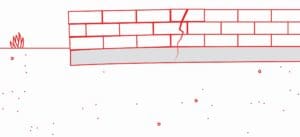
In the United States, Texas stands out not just for its size and cultural richness but also for its unique soil and climatic conditions. Unfortunately, these same conditions also make Texas foundation problems a prevalent issue for homeowners. The question many ask is: are Texas homes susceptible to foundation problems more so than homes in other states? Let’s dive into the heart of the matter.
The Expansive Clay Challenge
A large chunk of Texas land, especially in regions like the Blackland Prairies, is filled with fertile black soil. While this soil is a boon for agriculture, it poses challenges for construction. This soil is packed with expansive clay which expands when wet and contracts when dry. The expansion and contraction of this soil, known as slab heave or “upheaval,” creates uneven pressures on home foundations. Over time, as the Texas soil repeatedly moves with seasonal weather changes, the pressure can lead to significant foundation failures. This explains why Texas foundation problems like cracks in walls, leaning chimneys, and sticking doors are so common.
The Heat Factor
Couple this with Texas’s blistering heat. With temperatures frequently soaring over 100 degrees in summer, the intense heat exacerbates foundation issues. As the heat rises, it causes the moisture in the surrounding soil to evaporate rapidly, leading to dehydration. This dehydration further triggers soil shrinkage and movement, adding to the foundation problems Texas homeowners face. Furthermore, during rainier seasons, excess water can accumulate around homes if not drained correctly, leading to a whole different set of challenges.
A Hub for Innovative Solutions
While it’s true that homes everywhere can have foundation issues, the particular combination of Texas’s soil composition and its climate patterns amplifies these problems. Are Texas homes susceptible to foundation problems? The answer, given the expansive clay soil and extreme temperatures, is a resounding yes. However, Texas is also home to innovative solutions like the Wafflemat System and the Post Tension foundation, which have been developed in response to these challenges.
Conclusion
In conclusion, if you own or are considering purchasing a home in Texas, it’s crucial to be aware of Texas foundation problems and take preemptive measures. By understanding the unique challenges of the Lone Star State and seeking expert guidance, homeowners can ensure their homes stand strong and resilient for years to come.
